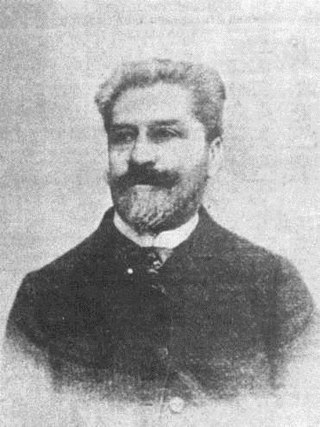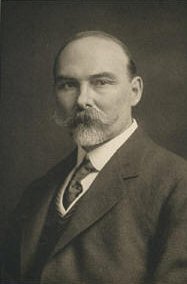
Gnosticism is a collection of religious ideas and systems that coalesced in the late 1st century AD among Jewish and early Christian sects. These various groups emphasized personal spiritual knowledge (gnosis) above the proto-orthodox teachings, traditions, and authority of religious institutions.

The Nag Hammadi library is a collection of early Christian and Gnostic texts discovered near the Upper Egyptian town of Nag Hammadi in 1945.
Ecclesia Gnostica is an open sacramental neo-Gnostic church based in the United States. It has ordained clergy and conducts regular sacramental services, including two weekly Masses, as well as monthly and seasonal services in accordance with the liturgical calendar. It has active parishes in Seattle, Portland, Austin, and Los Angeles.

Stephan A. Hoeller is an American author, lecturer and neo-Gnostic bishop.
Pistis Sophia is a Gnostic text discovered in 1773, possibly written between the 3rd and 4th centuries AD. The existing manuscript, which some scholars place in the late 4th century, relates one Gnostic group's teachings of the transfigured Jesus to the assembled disciples, including his mother Mary, Mary Magdalene, and Martha. In this text, the risen Jesus had spent eleven years speaking with his disciples, teaching them only the lower mysteries. After eleven years, he receives his true garment and is able to reveal the higher mysteries revered by this group. The prized mysteries relate to complex cosmologies and knowledge necessary for the soul to reach the highest divine realms.

Jules-Benoît Stanislas Doinel du Val-Michel, also known simply as Jules Doinel or Tau Valentin II was an archivist and the founder of the first Gnostic church in modern times who claims, that he was consecrated into a new episcopal lineage in a dream by the "Eon Jesus".

The Apocryphon of John, also called the Secret Book of John or the Secret Revelation of John, is a 2nd-century Sethian Gnostic Christian pseudepigraphical text attributed to John the Apostle. It is one of the texts addressed by Irenaeus in his Against Heresies, placing its composition before 180 AD. It is presented as describing Jesus appearing and giving secret knowledge (gnosis) to his disciple John. The author describes it as having occurred after Jesus had "gone back to the place from which he came".
Barbēlō refers to the first emanation of God in several forms of Gnostic cosmogony. Barbēlō is often depicted as a supreme female principle, the single passive antecedent of creation in its manifold. This figure is also variously referred to as 'Mother-Father', 'The Triple Androgynous Name', or 'Eternal Aeon'. So prominent was her place amongst some Gnostics that some schools were designated as Barbeliotae, Barbēlō worshippers or Barbēlō gnostics.

The Books of Jeu are two Gnostic texts. Though independent works, both the First Book of Jeu and the Second Book of Jeu appear, in Sahidic Coptic, in the Bruce Codex. They are a combination of a gospel and an esoteric revelation; the work professes to record conversations Jesus had with both the male apostles and his female disciples, and the secret knowledge (gnosis) revealed in these conversations.

George Robert Stow Mead was an English historian, writer, editor, translator, and an influential member of the Theosophical Society, as well as the founder of the Quest Society. His works dealt with various religious and philosophical texts and traditions, including Neoplatonism, Hermeticism and Gnosticism.
Gilles Quispel was a Dutch theologian and historian of Christianity and Gnosticism. He was professor of early Christian history at Utrecht University.
Gnostic church may refer to a variety of Gnostic religious organizations. Various Gnostic churches include:

JeanBricaud, also known as Tau Jean II, was a French student of the occult and esoteric matters. Bricaud was heavily involved in the French neo-Gnostic movement. He was consecrated a Gnostic bishop on 21 July 1913 by bishop Louis-Marie-François Giraud. He was the Patriarch of the Église Gnostique Universelle and a central figure in the various lines of the apostolic succession of subsequent Gnostic churches, as well as a spiritual heir of Jules Doinel. From 1916 he was head of the Ordre Martiniste. He was a friend of the occultists Papus and August Vandekerkhove.
The Askew Codex is a manuscript of parchment in quarto size, or 21 x 16,5 cm, held by the British Library, that contains Coptic translations of the Gnostic Pistis Sophia and parts of what G. R. S. Mead referred to as "extracts from The Books of the Savior."
Sophia is a major theme, along with Knowledge, among many of the early Christian knowledge theologies grouped by the heresiologist Irenaeus as gnostikoi (γνωστικοί), "knowing" or "men that claimed to have deeper wisdom". Gnosticism is a 17th-century term expanding the definition of Irenaeus' groups to include other syncretic faiths and the Greco-Roman mysteries.
Archons, in Gnosticism and religions closely related to it, are the builders of the physical universe. Among the Archontics, Ophites, Sethians and in the writings of Nag Hammadi library, the archons are rulers, each related to one of seven planets; they prevent souls from leaving the material realm. The political connotation of their name reflects rejection of the governmental system, as flawed without chance of true salvation. In Manichaeism, the archons are the rulers of a realm within the "Kingdom of Darkness", who together make up the Prince of Darkness. In The Reality of the Rulers, the physical appearance of Archons is described as hermaphroditic, with their faces being those of beasts.

The Gnostic Church of France is a neo-Gnostic Christian organisation formed by Jules Doinel in 1890, in France. It is the first Gnostic church in modern times.
Tau Malachi is an American neo-Gnostic religious leader and writer. He is currently the Gnostic Apostle of Ecclesia Pistis Sophia, also known as The Fellowship.









